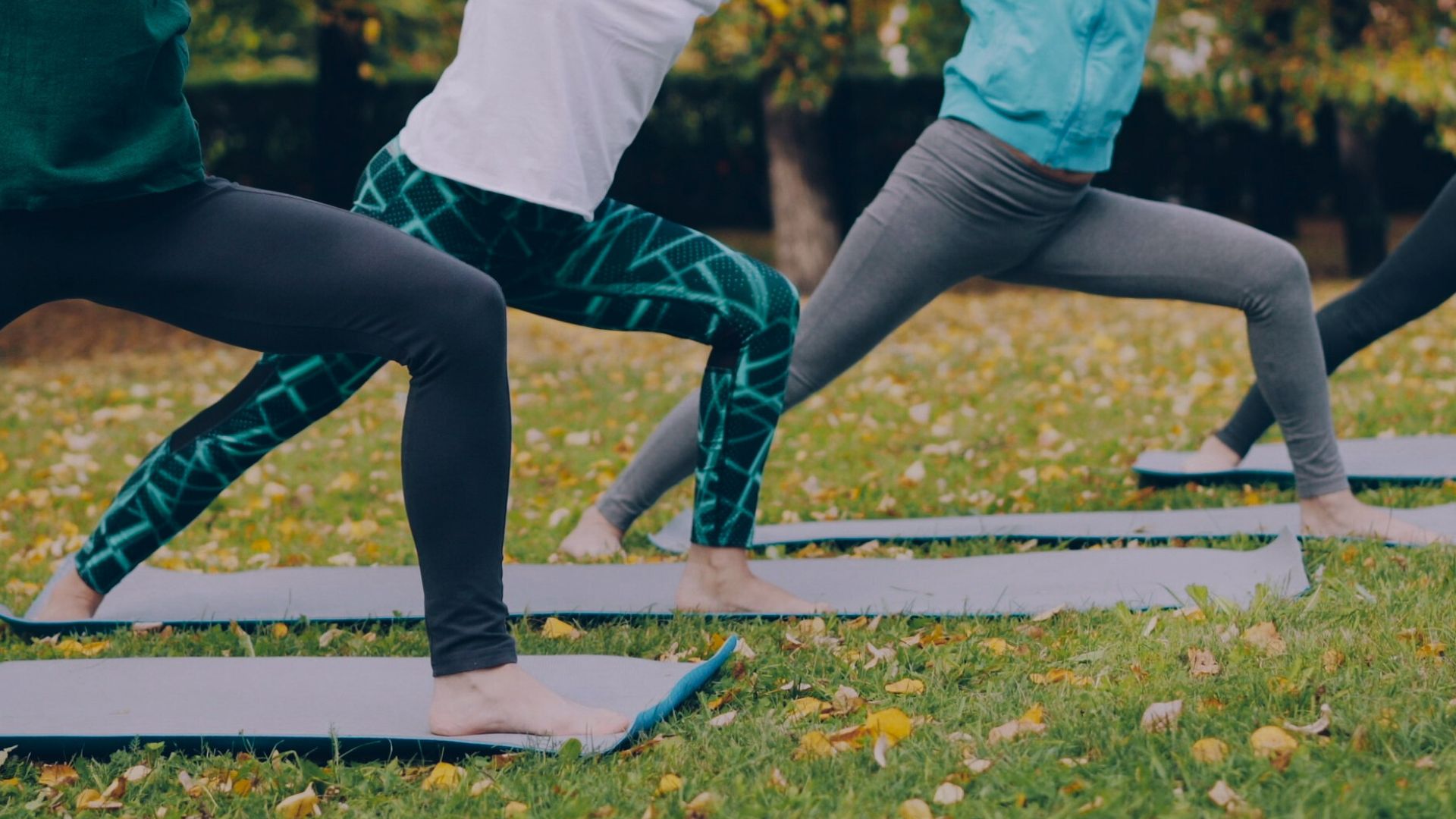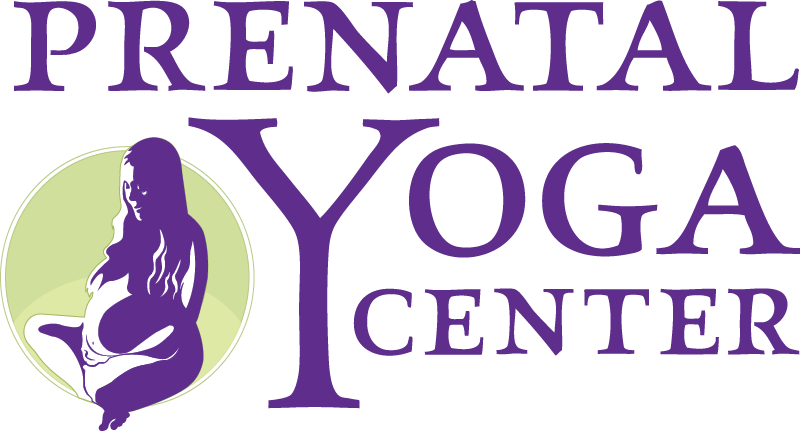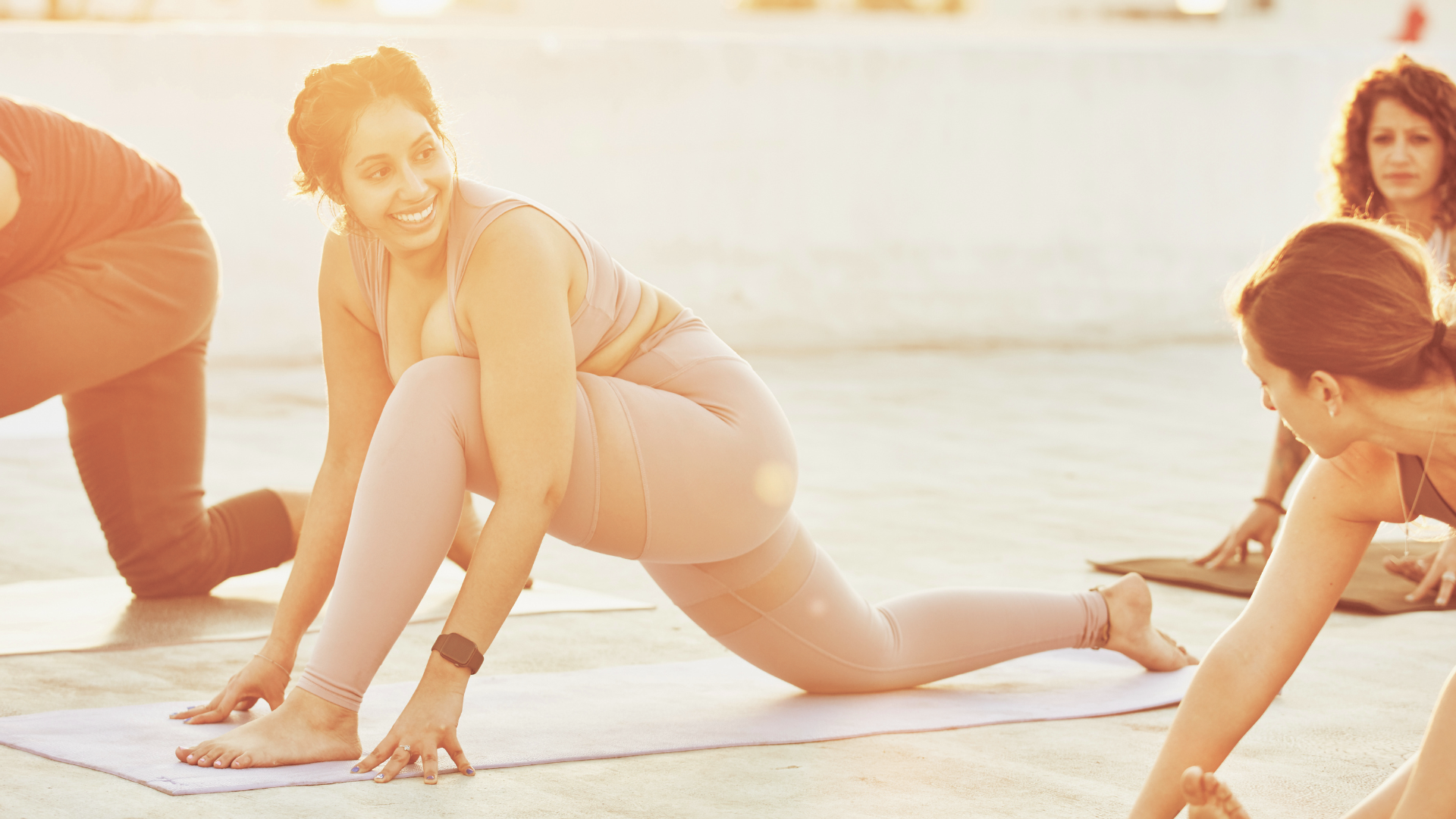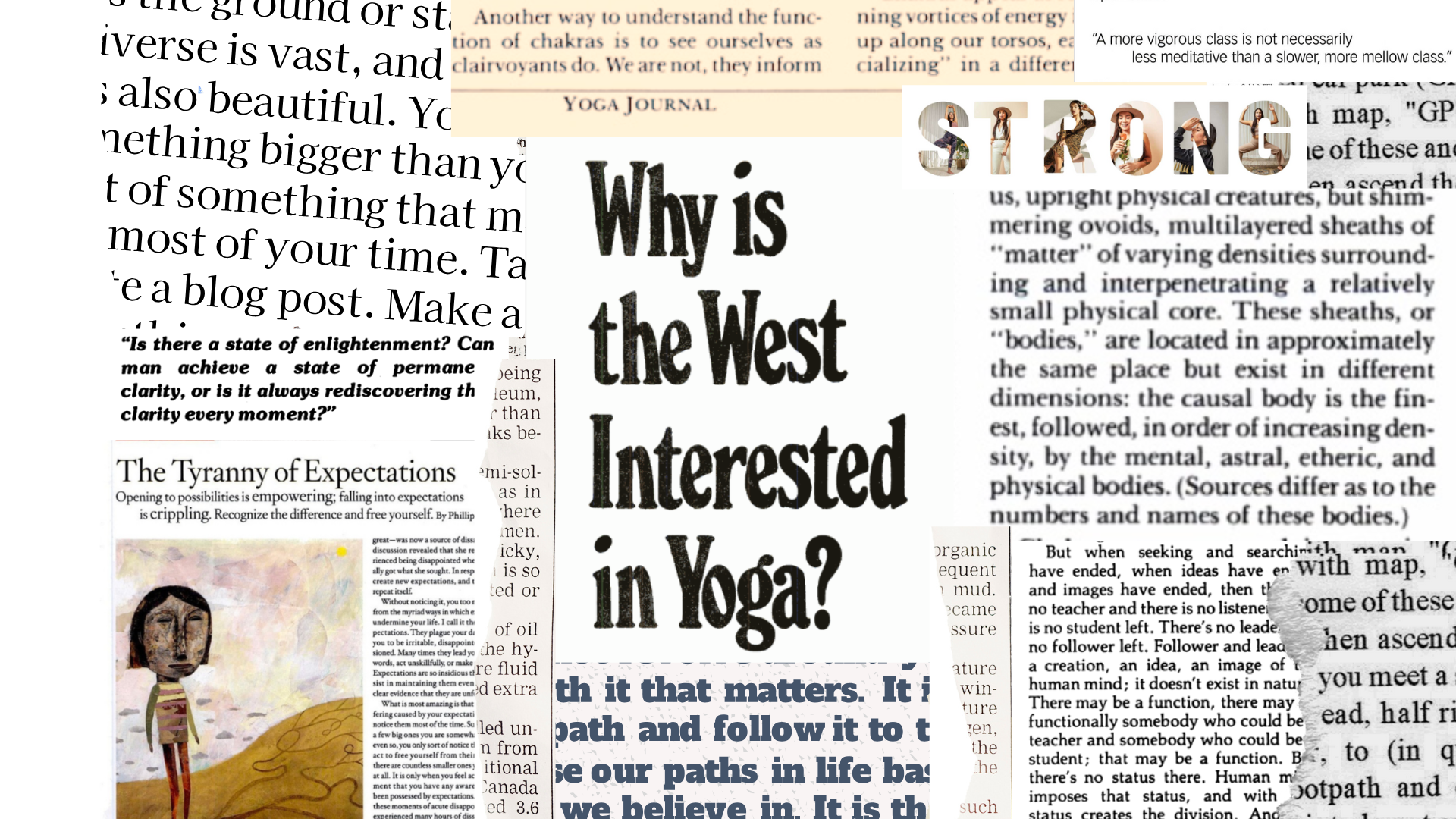Published October 21, 2025 08:20AM
Early adopters of yoga—in the West and elsewhere—would hardly recognize the practice these days. Although the shapes remain the same, what’s changed are the matching branded spandex sets everywhere you turn whether in studio classes or the snapshots posted to social media.
Yoga fashion is nothing new, having evolved ever since its introduction to the West. But for some, contemporary yoga has become almost as much about the associated attire as the flow that inspired the fits.
Although the trappings of modern fashion may be a walking contradiction of yoga philosophy, there’s nothing like a good look back at past trends to remind us that we exist in a material world. From fully functional clothing in loose silhouettes and breathable natural fabrics, to matching second-skin pieces that can be worn beyond the mat, the options available today are a stark difference from what we wore in the past.
A History of Yoga Fashion in the West
Before getting into the evolution of yoga clothing and trends, it’s worth exploring some context for the practice’s slow but steady expansion into the West—and the clothing that accompanied it.
In the late 1800s, an Indian Hindu monk and philosopher by the name of Swami Vivekananda introduced yoga to the States as a spiritual experience. It was not yet seen as an exercise, instead poised as a form of meditation that came with some stretching.
Eventually, yoga’s collective emphasis shifted to asana, or the now-familiar poses, a physical approach that called for certain types of clothing to help those practicing feel comfortable during their movement.
1960s: B.K.S Iyengar’s Shorts
Despite a select few teachers opening studios in the States in the early part of the century, yoga didn’t start to become remotely common until the late 1960s. There weren’t a ton of fashion options available. Yogis relied on whatever was currently on the market, a short list that included effortless, bohemian styles such as the dhoti, a large cloth that could be strategically wrapped around the waist to resemble a pair of harem-like trousers.
Fortunately for the future of yoga style, Indian instructor Bellur Krishnamachar Sundararaja (B.K.S) Iyengar—founder of Iyengar yoga and covert fashion trendsetter—discovered the benefits of wearing shorts during practice at an early age in India’s hot and humid climate.
When he began teaching in the United States during 1956, he brought these high-cut bloomers with him, modernizing the look from ankle-length breechcloths and expanding the scope of yoga fashion to include a silhouette that felt more modern.
From a movement standpoint, the approach made sense. Not only did shorts allow for enhanced ease, they also offered better temperature regulation during intense physical practice. If you ask Alexa Suter, CEO and founder of Huha, a Vancouver-based intimates brand that offers low-impact activewear, while the look of yoga fashion was constantly changing, the throughline remains the same. “You want clothes that move with you––not against you,” she explains.
Despite being rather controversial in an industry that was rooted in spiritual modesty, these shortened silhouettes found popularity beyond the yoga mat, and would become a precursor to the more laidback fashion workout trends in the years that followed.
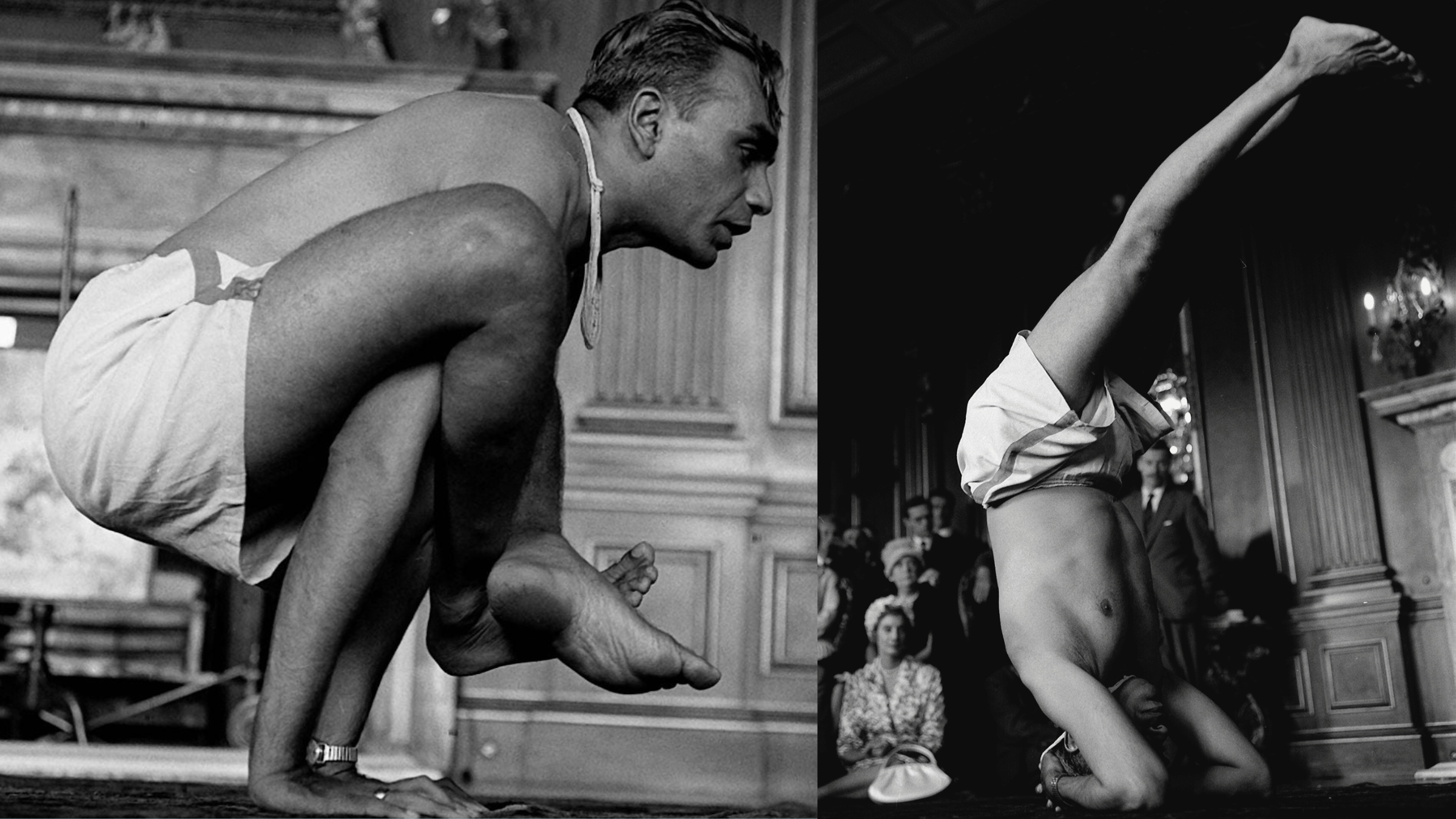
1970s: Flattering Fits
A science-backed movement toward aerobic exercise, particularly for women, and a collective focus on self-improvement defined the 1970s. This resulted in workout clothes that were fun and flattering as well as functional.
Aerobic exercises like Jazzercise—which saw people working out in community, and showing off their outfits in the process—brought a dance-inspired wardrobe of leotards and coordinated (or deliberately clashing) tights that played well in the yoga world.
In 1972, yoga teacher Lilias Folan, who would later be deemed “The First Lady of Yoga” by her followers, landed the PBS show, Lilias, Yoga and You, which helped make yoga accessible to curious viewers around the country. During her broadcasts, Folan routinely wore stretchy, one-piece catsuits that clung to her body in second-skin fits, whether in solid colors or playful patterns. Long-sleeved and with full leg coverage, the singlets brought an alternative to the era’s showier high-cut leotards. Still, the wardrobe choice echoed the dancerly, aerobics-inspired ensembles dominating the fitness scene with patterns that foreshadowed what was to come.
Meanwhile, more casual options, including tracksuits and wide-legged silhouettes, gained popularity throughout the decade. Micro-mini shorts—which WWD dubbed “hot pants” in 1970—became more widely acceptable, especially as people started gravitating toward of-the-moment (and sexy) pieces that they could wear beyond their workouts.
This evolution in relaxedness and everyday style touched the mainstream and activewear markets alike, beginning to blur the lines between workout clothes and everyday outfits.
1980s: Bold and Bright
By the 1980s, the wellness and workout sector had exploded into a multi-billion dollar industry. Sales for “at home” exercise equipment alone would go on to reach $1.73 billion by the end of the decade.
In the fashion world, designers such as Versace were creating pieces with vivid colors and a want of functionality. Bodysuits and leggings crafted from spandex, once reserved for activewear alone, were paired with blazers and other polished pieces on the runway. This collective reimagining of workout wear resulted in everyday fitness fashion experiencing a complete overhaul—and yoga attire was no exception.
The surging interest in aerobics and calisthenics found people searching for aesthetically pleasing activewear in an era defined by Jane Fonda as fitness icon. High-cut leotards and tights took on the decade’s palette of neons, metallics, and geometric prints, as did track and sweatsuits and the ubiquitous bike shorts. There were also Flashdance-inspired styles, slouchy cropped tees and sweatshirts that exposed one shoulder worn over leotards. Stirrup leggings became the norm—a trend that would extend well into the 90s.
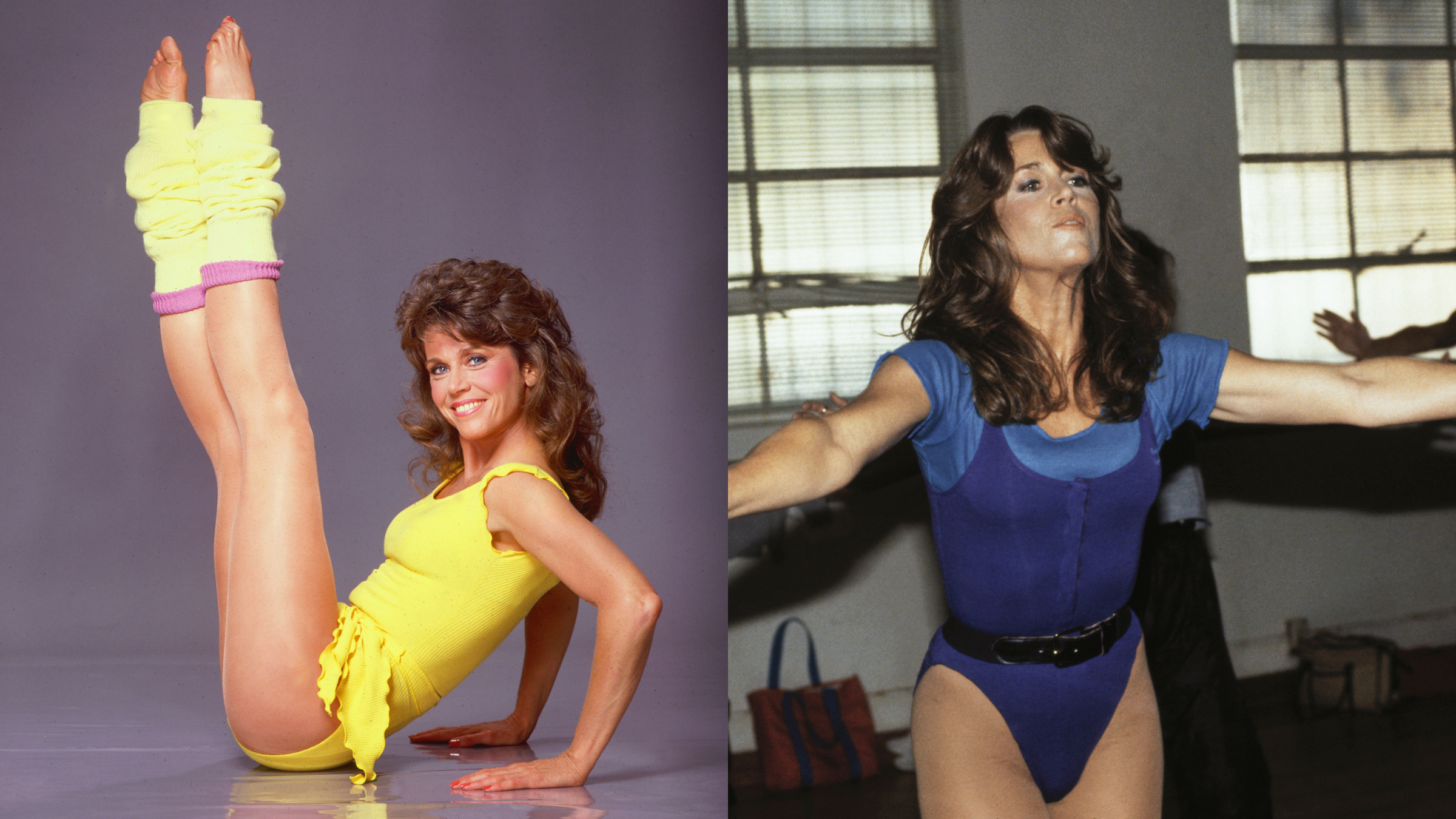
The 80s look was also distinct for its accessories. Designed for regulating body temperature as well as keeping sweat at bay, terrycloth headbands and leg warmers were all the rage. They also ensured you could complement a workout outfit in a practical way—a foreshadowing of coordinated activewear sets to come.
In 1988, Richard Simmons’ Sweatin’ To The Oldies exercise video infiltrated living rooms around the country––as did his outfits. Simmons was known for wearing a colorful combination of loose-fitting tank with Dolphin shorts, a style of super short shorts with curved hems that are often made in a range of materials like nylon and terrycloth, likely influencing yoga looks.
That same year, Vogue reported on Madonna boasting a sweat-wicking wardrobe that accompanied her rigorous workout and yoga routine.
1990s: The Birth of the Yoga Pant
Pop culture moments propelled the yoga movement—and the accompanying fashion that came to define it—into the mainstream in the 90s with celebrities leading the charge.
The decade saw celebs including Sting and Gwyneth Paltrow (fun fact: she and Madonna favored Ashtanga) spending time on the mat. As the practice grew from a niche mindfulness pursuit to a countrywide craze, women’s magazines began highlighting yoga and Oprah did a feature segment. By the late 90s, the trend had become a way of life.
This burgeoning popularity led to an influx of new brands dedicated to creating clothing specifically for low-impact workouts. Lululemon, founded by Chip Wilson in 1998, is an enduring example. The brand was responsible for yoga pants as we’ve come to know them, launching the Boogie Pant that first year.
Designed as a second skin with a gently flared leg resembling a bootcut jean, the earliest iterations of yoga pants featured thick fold-over waistbands. According to activewear manufacturer UGA, this choice was more than just a fashion statement, as the wide elastic bands (which could be folded down for an era-defining low-rise fit) offered additional support.
Yoga Clothes and the New Millennium
The early 2000s brought celebs including Robert Downey Jr., Jennifer Aniston, and Christy Turlington onboard, the latter two often photographed practicing in minimalist tank tops and spandex shorts or plain leggings.
The majority of the era’s options, though, were reminiscent of the larger fashion landscape: two-tone pieces, playful prints, and tops and pants with thick, colorful bands everywhere. Founder of vintage activewear shop Rummage Stretch, Isabella O’Day considers herself particularly inspired by this era. She notes Turlington’s book, Living Yoga, circa 2005 as a defining moment for her.
“[It] had such a specific vibe then,” she says, referring to the patterns and overall fit of the decade that some would say is missing among contemporary pieces. “My mom is a yoga teacher and she had all of those styles growing up and I just think they look so fun and flattering.”
2010s: Athleisure Era
The 2010s were marked by the elevation of athleisure, a combination of athletic and everyday fashions designed to be worn beyond workouts. Evolving well beyond its late-70s origins, workout attire was embraced by many celebrities and runway models, who opted for joggers and leggings in everyday life
There was a constant and continuous conversation around whether or not leggings were actually pants and if they should or should not be worn outside of the studio. They were the look of the day, which Vogue attributes, at least in part, to Lululemon’s IPO in 2007. Additionally, the decade’s increase in remote work, along with the boutique fitness boom (think SoulCycle and Barry’s Bootcamp along with studio chains such as YogaWorks) made leggings an obvious candidate for around-the-clock wear.
By the late 2010s, minimalist sweats and active-inspired basics were cemented in everyday life. Any comfy yoga clothes previously reserved for the studio became fair fashion game real life—and vice versa.
2020s: At-Home Ambassadors
The desire for comfortability was compounded in 2020 with the Covid pandemic. Lockdown meant that dressing down was the new norm. Lululemon, Nike, Gap, and other brands saw organic surges in sales, while other companies, including Alo, moved to leverage the collective want of comfort.
Alo Yoga launched its ambassador program in the early 20s and invited celebrities including Taylor Swift, Kendall Jenner, and Gigi Hadid, along with a host of social media influencers, to don its signature sets in posts and reels. Influencers were encouraged to post their yoga practices featuring the sleek pieces and also flaunt their product hauls and fit videos.
Today, it’s nearly impossible to scroll through social media without seeing some influencer-backed collection emblazoned with a brand name, embracing yoga as a more curated and trendy aesthetic rather than a practice.
Because of the enduring popularity of athleisure, yoga clothes ultimately made their way out of the house and into the streets and studio. Alo’s overt push among social stars spurred similar creator programs from popular yoga lines like Lululemon and Athleta, the campaigns designed to make their activewear simultaneously aspirational and accessible.
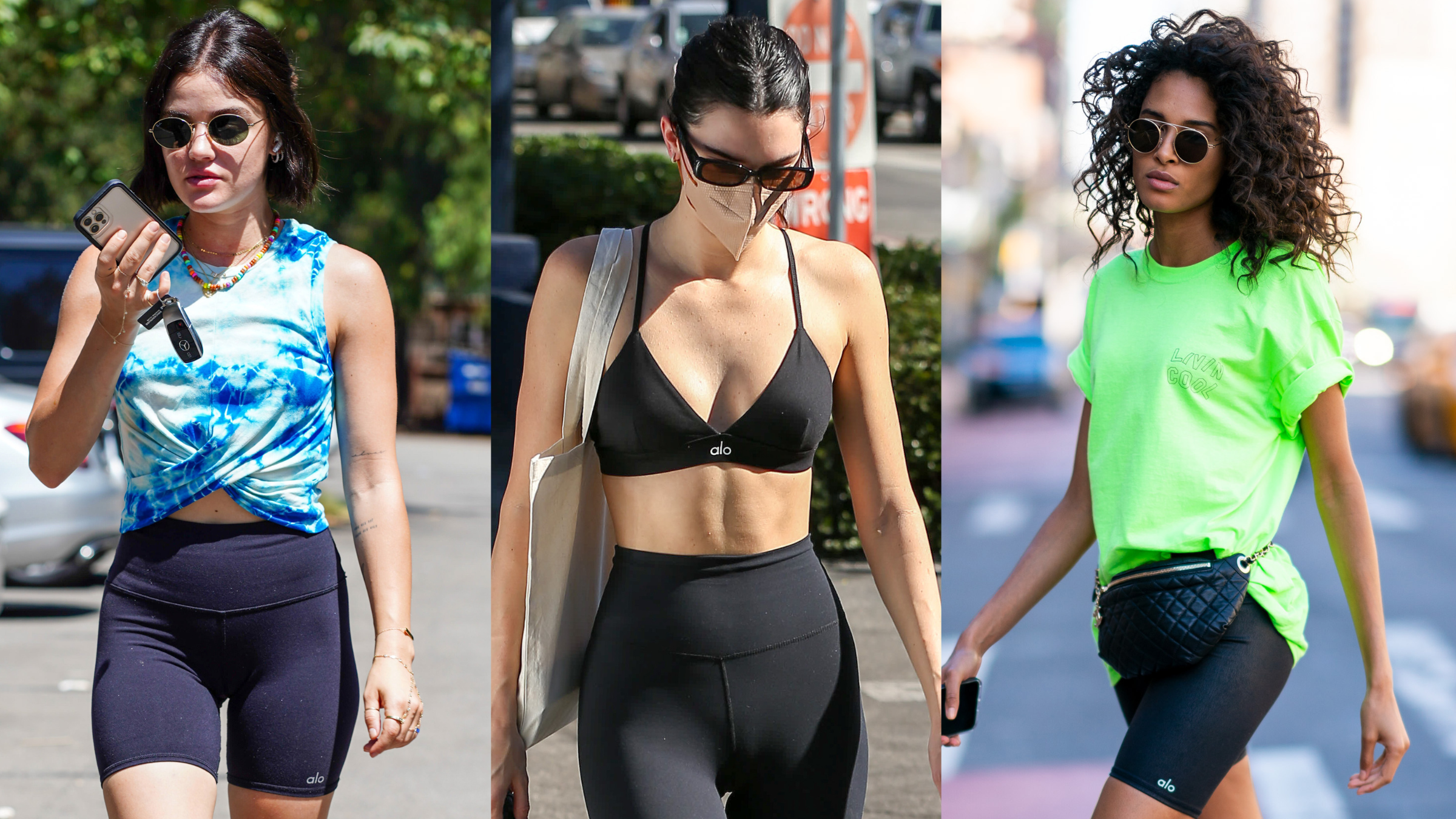
Earlier this year, Business of Fashion proclaimed that “the reign of leggings is officially over” with research suggesting that shoppers and yoga instructors are now gravitating towards wide-leg trousers. According to the report, the number of shoppers buying leggings has decreased by 8.2 percent since 2022, while the popularity of loose-fitting pants has more than doubled in the last three years. Smith confirmed this shift after visiting her daughter in Chicago early this month. “I noticed that everyone was wearing activewear.”
It’s true. These days, you can’t scroll through social media without seeing celebrities in signature activewear en route to their workout class of choice, or some influencer-backed sweat set available in an array of solid colors. The shift has left many of consumers, including O’Day, fatigued by the options which, while endless, are somehow all still the same.
“Everything new is a uniform, ‘one style for all’ vibe,” says O’Day. “Looking at [the vintage] things I source, there is so much color, focus on design, and fun shapes that feel sexy and playful.”
Material World
Research has shown that the overall quality of clothing has suffered in recent decades. Activewear is just one of the many casualties.
“Yoga clothing started as flowy linens, cotton, natural fiber type pieces that moved and flowed with your body,” says Suter. Although yoga fashions initially prioritized organic fabrics, the westernization of the practice, along with new production technology, invited synthetic fibers to ultimately dominate the industry, she explains. The shift resulted in the more form-fitting, moisture-wicking activewear items we’ve come to know.
But according to Meghan Smith, fashion history expert and owner of Melody Note Vintage, these more technical materials weren’t originally made with clothing in mind.
“Lycra or spandex—also known as elastane, the thing that gives our clothing that stretch—was invented in 1958, but synthetic fiber was originally introduced in the ‘30s,” she explains. “It wasn’t really used for apparel until the ‘60s.” This, in conjunction with the West’s yoga boom, made the timing just right.
Yet Suter considers the current state of activewear “abysmal” given its reliance on modern materials. “When it comes to sweat-wicking technology and fabrics, they’re not only ridden with chemicals, but these types of synthetic fibers become breeding grounds for bacteria,” she says. And customers are starting to notice. More modern made leggings and T-shirts are trapping odors and sweat stains, even after multiple washes.
Thankfully, there are plenty of brands, including Suter’s, that hope to revert to quality over quantity in the activewear industry while taking the environment into account.
In terms of sustainable materials and inclusive sizing, yoga clothing brands like Girlfriend Collective are leading the charge. The brand has been prioritizing recycled fabrics for nearly a decade with leggings crafted from post-consumer plastic bottles, fabrics made from recycled polyester, and an open dialogue around the ongoing search for recycled spandex.
Prana, too, has long been committed to creating sustainable activewear. The brand is transparent about its supply chain, utilizes recycled nylon, cotton, and polyester, and uses a “Renewal Workshop” to clean, repair, and recycle used and returned merchandise.
This sort of circularity is crucial when considering a clothing item’s lifecycle, all the better to keep pieces out of the landfill. Girlfriend Collective accepts clothing from any brand into their buyback program, ReGirlfriend, which recycles materials. Other brands have their own resale initiatives, including Athleta Preloved, Lululemon Like New, and Patagonia Worn Wear, each of which offer gently loved pieces a second life.
The Future of Yoga Fashion
Ultimately, the future of yoga fashion is for everyone, a point proven by an uptick in inclusive sizing across the board. Along with the regular, tall, and petite inseams offered by brands like Athleta, Girlfriend Collective offers sizes XXS through 6XL in an effort to make sure the world knows that every body is a yoga body.
According to Fortune Business Insights, the yoga clothing market in North America alone was valued at approximately $29.6 billion (globally, the market sits at about $40 billion) in 2024 and is projected to reach $32 billion by the end of 2025. These numbers are a significant increase from the decade prior. Yogi Times reported that in 2010 Americans spent nearly $10 billion on yoga clothes, accessories, and classes, alone, and by 2016 it was valued at $16 billion and growing. And grow, it did because nearly everyone you come across, both IRL and online, has practiced some form of yoga—and more often than not they have a robust wardrobe, specifically for the occasion and to say they’ve come a long way would be an understatement.
Like every subset of fashion, yoga clothing trends are cyclical even as they’re constantly evolving. The pendulum seems to be swinging back toward a more mindful approach to yoga style and a collective awareness around what we’re putting on our bodies, where it comes from, and where it’s going. Because when you feel at ease in your ensemble and on your mat, you’re free to focus on your practice.
This article is part of our look back at the last 50 years of yoga in commemoration of Yoga Journal’s 50th anniversary. Here’s where you can read more.

